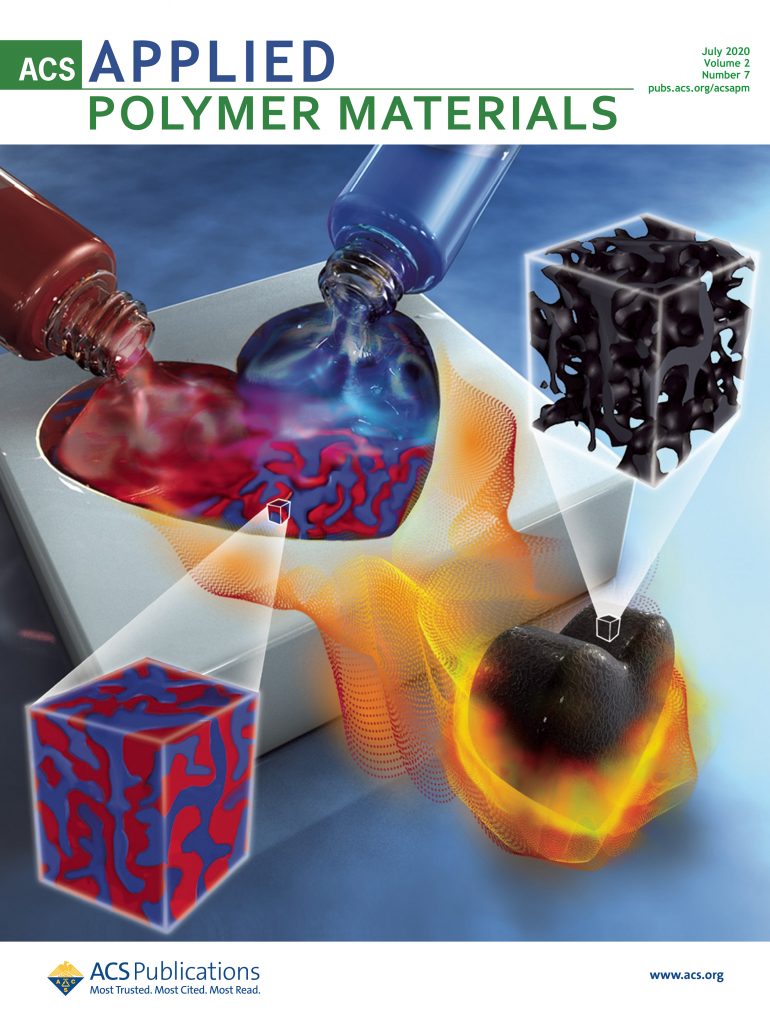Kinetic Simulation of Turbulent Multifluid Flows
IF 4.4
2区 化学
Q2 MATERIALS SCIENCE, MULTIDISCIPLINARY
引用次数: 0
Abstract
Despite its visual appeal, the simulation of separated multiphase flows (i.e., streams of fluids separated by interfaces) faces numerous challenges in accurately reproducing complex behaviors such as guggling, wetting, or bubbling. These difficulties are especially pronounced for high Reynolds numbers and large density variations between fluids, most likely explaining why they have received comparatively little attention in Computer Graphics compared to single- or two-phase flows. In this paper, we present a full LBM solver for multifluid simulation. We derive a conservative phase field model with which the spatial presence of each fluid or phase is encoded to allow for the simulation of miscible, immiscible and even partially-miscible fluids, while the temporal evolution of the phases is performed using a D3Q7 lattice-Boltzmann discretization. The velocity field, handled through the recent high-order moment-encoded LBM (HOME-LBM) framework to minimize its memory footprint, is simulated via a velocity-based distribution stored on a D3Q27 or D3Q19 discretization to offer accuracy and stability to large density ratios even in turbulent scenarios, while coupling with the phases through pressure, viscosity, and interfacial forces is achieved by leveraging the diffuse encoding of interfaces. The resulting solver addresses a number of limitations of kinetic methods in both computational fluid dynamics and computer graphics: it offers a fast, accurate, and low-memory fluid solver enabling efficient turbulent multiphase simulations free of the typical oscillatory pressure behavior near boundaries. We present several numerical benchmarks, examples and comparisons of multiphase flows to demonstrate our solver's visual complexity, accuracy, and realism.湍流多流体流动的动力学模拟
尽管多相分离流(即被界面分离的流体流)具有视觉上的吸引力,但其模拟在准确再现诸如纠缠、润湿或气泡等复杂行为方面仍面临诸多挑战。这些困难在高雷诺数和流体间密度变化大的情况下尤为明显,这也是为什么与单相或两相流相比,它们在计算机图形学中受到的关注相对较少的原因。在本文中,我们介绍了用于多流体模拟的全 LBM 求解器。我们推导出一种保守相场模型,利用该模型对每种流体或相的空间存在进行编码,从而可以模拟混溶、不混溶甚至部分混溶的流体,同时利用 D3Q7 晶格-玻尔兹曼离散法对相的时间演化进行处理。速度场通过最新的高阶矩编码 LBM(HOME-LBM)框架处理,以最大限度地减少内存占用,速度场通过存储在 D3Q27 或 D3Q19 离散上的基于速度的分布进行模拟,即使在湍流情况下也能提供大密度比的精度和稳定性。由此产生的求解器解决了动力学方法在计算流体动力学和计算机图形学中的一系列局限性:它提供了一种快速、精确和低内存的流体求解器,能够进行高效的湍流多相模拟,而不会在边界附近出现典型的振荡压力行为。我们介绍了几个多相流的数值基准、示例和比较,以展示我们求解器的可视化复杂性、准确性和真实性。
本文章由计算机程序翻译,如有差异,请以英文原文为准。
求助全文
约1分钟内获得全文
求助全文
来源期刊

ACS Applied Polymer Materials
Multiple-
CiteScore
7.20
自引率
6.00%
发文量
810
期刊介绍:
ACS Applied Polymer Materials is an interdisciplinary journal publishing original research covering all aspects of engineering, chemistry, physics, and biology relevant to applications of polymers.
The journal is devoted to reports of new and original experimental and theoretical research of an applied nature that integrates fundamental knowledge in the areas of materials, engineering, physics, bioscience, polymer science and chemistry into important polymer applications. The journal is specifically interested in work that addresses relationships among structure, processing, morphology, chemistry, properties, and function as well as work that provide insights into mechanisms critical to the performance of the polymer for applications.
 求助内容:
求助内容: 应助结果提醒方式:
应助结果提醒方式:


